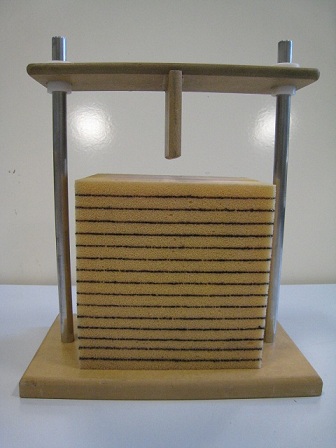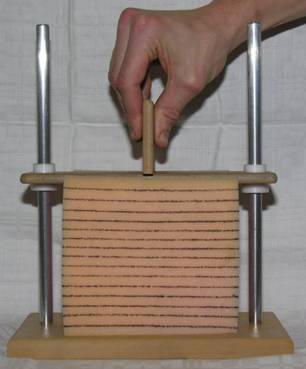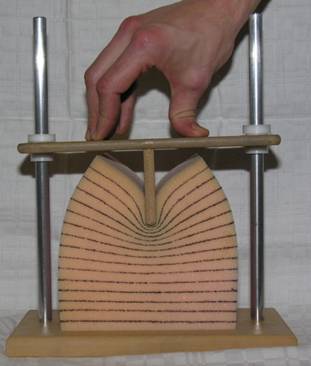Model 3: Stress concentration
This demonstration shows the stress distributions of a sponge block model due to a compressive distributed load and a compressive concentrated load and Saint-Venantís Principle.

Figure 6.A1: The model
The model comprises a piece of sponge on which a number of horizontal lines are marked, a T shaped stiff plate by which a distributed load or a concentrated load can be applied, and a base plate with two vertical metal tubes so that loads are applied vertically. Figure 6.A1 shows the components of the model and the sponge block before deformation.
When a distributed load is applied on the sponge as shown in Figure 6.A2a, it is observed that all the horizontal lines of the block remain horizontal. In this case, the stresses in the cross-sections of the sponge block are uniform and can be determined using the relationship ![]() , where P is the total load and A is the area of the cross-section.
, where P is the total load and A is the area of the cross-section.


Figure 6.A2: Deformations of the sponge block due to uniformly distributed and concentrated loads
When a concentrated load is applied as shown in Figure 6.A2b, it can be observed that:
- Near of top end of the block where the concentrated load is applied, the lines form a pattern that radiates out from the loading point, indicating a radial stress configuration.
- At a distance from the loading point, the lines remain parallel to the base and appear the same as they did with the distributed load.
The second of the above two observations is an illustration of Saint-Venantís Principle:
The stresses and strains in a body that are sufficiently remote from points of application of load depend only on the static resultant of the loads and not on the distribution of the loads [6.4]
